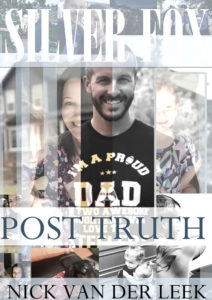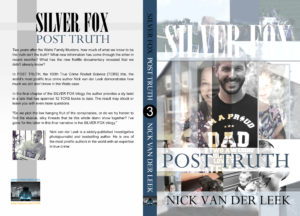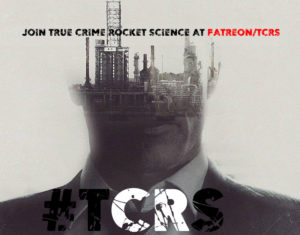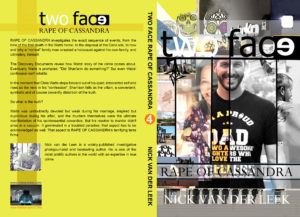By far the most disturbing “takeout” from the Netflix docuseries on Madeleine McCann is this contention [stated as fact]: that there’s no evidence linking the DNA in the blood traces found in the rented Renault Scenic and apartment 5A to Madeleine McCann.
Is that a fact?
You may remember that the advent of the dogs alerting in the apartment, the car, the villa and on Cuddle Cat led to the widespread belief that Madeleine was dead, and that she died in the apartment on May 3rd. But take away the DNA evidence and suddenly Madeleine is alive again, scuttling off in the streets somewhere in the great beyond, beyond apartment 5A anyway.
In this scenario one might as well look at the footage of the dogs and turn the volume off. They’re barking at nothing, right? They’re unreliable, right?
The notion fielded in episode five is not disturbing so much because there’s no evidence, but because I believe there is. It’s not disturbing because the media believe Madeleine McCann is alive, it’s disturbing because as a result of the twisting of this particular evidence, there’s now “proof” that she’s not dead.
Wow, what a mind job!
Going by the Netflix docuseries, it’s not surprising public perception around a complicated forensic issue would be as simple and straightforward as it’s presented in this article by Digital Spy by editor Laura Jane Turner:

Well, let’s start with the first issue here.
It’s not true that the docuseries provides an “exhaustive timeline”. The docuseries provides a little information in fairly large increments between 20:30 and 22:00 on the night of May 3rd, 2007. So the timeline aspect relating to the incident can basically summarised in a paragraph no longer than this one.
An exhaustive timeline would at the very least include the diary of the McCanns starting from their arrival in Praia da Luz on Saturday, April 28th, 2007, and meticulously examining and comparing what they did each day, day to day, and how this pattern of behaviour compared to those on the day and night night in question.
The docuseries makes absolutely no provision for the events earlier in the day of May 3rd. Nothing about the weather or the movements of the family from the moment they woke until they retired to wash-up and prepare for dinner. There’s zero mention of David Payne disputed visit in the late afternoon, supposedly catching Kate McCann in the shower or getting out of it.
We also don’t get a similar orientation around the activities of the Tapas 7. Who hung out with who, typically what did they do each day, where, how and when? What time did all of them typically go to sleep each night? What were the rituals regarding the children of the Tapas 7 like? Were there any incidents, accidents or illnesses among their children during the break?
So no, the timeline is hardly exhaustive; instead it’s skeletal, and not just skeletal, a few spare, bare bones skeletal.
Now to the dogs and the DNA.
The Digital Spy article highlights the “infamous footage” of the cadaver dogs, and rightly notes the entry of the dogs into the narrative “spurred a shift” in the narrative.

I think it’s a little slippery to say the shift that occurred in the investigation after the dogs was in terms of how the case was handled. The writer seems to think the dog evidence led to the case being handled worse than it had been, until that point, or mishandled. Really? By looking at the parents as suspects for the first time the case wasn’t handled properly?

There’s no explanation from Digital Spy for what the dogs were alerting to, if the evidence that was tested as a result of the dogs proved it wasn’t Madeleine.
Let me be clear about it. A dog trained to trace human blood found human blood, and it was sent to a British lab for testing. A dog trained to trace human cadavers found it, and here too more evidence was collected and sent to the lab. Then the lab returned with a verdict: the substances tested were human [well done dogs!], but they weren’t Madeleine.
So this raises two obvious questions:
- If the evidence traces wasn’t Madeleine’s blood or body fluids in the apartment and the Renault Scenic, whose was it? [The argument seems to be it was everyone else’s blood, or it could have been everyone else’s blood, it just wasn’t Madeleine’s blood].
- Cadaver traces were found in the apartment and the car. So if a human being died, and traces were found, who was it? Who died? [The argument seems to be that either the dogs made a mistake, or if not, then the human traces weren’t Madeleine but some anonymous interloper who coincidentally did in the apartment and used the same rental car as the McCanns].
There also seems to be some circular reasoning going on here. If the blood can’t be proved to be Madeleine’s, then there’s no proof she’s dead. Also, if a cadaver odor is found and it can’t be proved that it’s Madeleine, then it’s not necessarily proof that anyone died, including Madeleine.
I’m purposefully avoiding a more technical discussion for the moment, simply for reasons of brevity and to express the absurdity of the argument. I will deal with the scientific argument, and the sneaky way the evidence was processed at the FSS labs, in a follow-up post.
It should be noted in the meantime, though, that precisely the same sneaky scenario played out in the JonBenet Ramsey case. First there was no DNA evidence linking the family to her cadaver, and then 20 years later there was. In that case the DNA testing was handled by a company called Bode Labs.
From the Daily Camera [2018]:
“From my own experience, there is no case that is just a DNA case,” Dougherty said. “You could have a sexual assault or a murder and develop a full profile, but that full profile does not necessarily mean that the person who has that DNA was the perpetrator of the crime.”
In a case where the DNA evidence is inconclusive, that inconclusivity cannot be raised as a flag to claim “no evidence” exists. One can merely say the case needs to be investigated using other avenues, such as witness statements, circumstantial evidence, forensic accounting etc. I personally don’t think the DNA evidence in the McCann case or the Ramsey case is inconclusive, although the evidence was clearly difficult to come by. I do think the “inconclusive” aspect is a clever charade of smoke and mirrors.
To illustrate this, one ought to look at the DNA narrative of the Van Breda triple murder case. It’s difficult to imagine a crime scene more doused in blood than that one.
When I sat in court and listened to the defence case, it started off with the DNA expect running through a long list of all the hundreds of inconclusive DNA results. Never mind the hundreds more DNA traces that were valid and confirmed, the DNA fixated on arguing about all the traces that weren’t 100% conclusive. They were trying to argue that some uncertainty and doubt existed around whose blood belonged to whom, where. Within a crime scene bloodbath described by one witness as “a waterfall of blood flowing down the stairs…”
The DNA expert was roundly lambasted during her extremely lengthy and tedious testimony by the Judge, who accused and chastised for manipulating the data and then criticised again during the Judge’s summation of the case.
From TimesLive:
On Tuesday‚ Judge Siraj Desai raised the issue of Olckers scouring through piles of documents “merely to poke holes in the state’s defence” rather than doing an “independent analysis” [on the DNA evidence] which could inform her expert opinion.
It turned out the DNA expert had never worked in a forensic crime lab before.
For an indefensible case, Van Breda’s defence strategy was clearly to seize on the DNA narrative as a way to claim “no evidence” or that evidence was uncertain. All it required was for an expert to “conjure” on the evidence, thus recasting reality with a flick of the expert’s wand. Again, never mind the accused had the blood of the victims all over himself. The Judge also made the point that even if all the DNA evidence were omitted from the trial, Van Breda would still have been found guilty. But that’s how anal and fickle the DNA narrative can sometimes become when dealt with by experts in a court of law.
Of course the best “spokesperson” for the “no evidence narrative” [specifically no DNA evidence] is Gerry McCann himself. Below Gerry addresses the prospect of Madeleine no longer being alive:
“We just don’t have any evidence…that the child’s dead…”
Gerry seems to talk about the lack of evidence with a certain glee, doesn’t he?
When the McCann’s sued Goncalo Amaral, who speculated based on his investigation that Madeleine had died on May 3rd, they repeated the same narrative to the media milling around the court.


It can and should be argued that if there is little evidence that Madeleine is dead, how much evidence is there that she’s alive? I suppose one could argue that 10 000 sightings worldwide constitute “possible” evidence, but anything is possible. These possibilities ought to be weighed against the “possibility” of those blood and cadaver traces belonging to Madeleine – perhaps not possible to verify scientifically, but that doesn’t mean it’s impossible that they are traces of Madeleine.
At Faro airport, on his way to court the point Gerry wanted to emphasise was the same “no evidence” catchphrase.


In the infamous interview when he was asked if he killed his daughter, Gerry also refers to the notion of “no evidence” when he says cryptically:
“There’s nothing to suggest anything…”
We get a darker sense of the utility of the “no DNA evidence” as a potential PR tool when we look at the Intertextual aspect. At 46 seconds in the clip below, Amanda Knox explains why she can’t possibly be the murderer of Meredith Kercher. Of course the first thing she does after being asked the question is she fails to hold back a DELIGHTED smile.
The weird thing about Knox’s argument is that one moment she’s arguing “my DNA wasn’t there, no trace of me was there…I wasn’t there” but she actually lived in the villa where Kercher was killed. So why isn’t she there? If her DNA’s not there, didn’t she live there?
A moment later at 1:12 when reference is made to DNA traces mixed with Meredith’s blood in the hallway, then it becomes “of course my DNA was there, I lived there!” So Knox’s argument is simultaneous “my DNA wasn’t there…I wasn’t there” and “of course my DNA I was there…I lived there!”
When Dr. Phil interviewed Burke Ramsey in mid-September 2016, he asked JonBenent’s 29-year-old older sibling:
There still are people that believe that you killed your sister? What do you say to that?
At 0:03 Burke replies smiling openly:
Look at the evidence, or lack thereof.
So if there’s no evidence to prove something happened, it didn’t happen?
There’s a difference between a lack of evidence and no evidence, also a critical difference between incomplete evidence, or evidence that wouldn’t hold up in court and the notion of “no evidence”.
Fact is, evidence was found in the McCann case [and in all the other cases cited above including Knox and Ramsey], but the “lack” was that so little blood traces were found it wasn’t possible to definitively link the DNA that was found to Madeleine [or in the Knox case, herself to the victim, in Burke’s case, himself to the victim]. In the Knox and Ramsey cases it wasn’t possible to definitively link their DNA to the cadaver/crime scene, but in both cases a lot other evidence did seem to link them – circumstantially – to the victim.
In Knox’s case there was some reason to believe in a DNA link. Both Knox’s DNA and Meredith’s DNA were found on a knife believed to be the murder weapon [located in Sollecito’s apartment]. Well, Meredith Kercher had never been to his apartment. Also, Sollecito’s DNA was found on a bra clasp under Kercher’s body in her room. How did that happen? Oh, it was a contaminated sample which also contained Knox’s DNA. After several appeals Knox and Sollecito were able to finally convince the court that the DNA evidence wasn’t definitive, and so this was the basis of her “exoneration”.
In the Ramsey case Burke’s prints were found on a bowl of pineapple in the kitchen, casting doubt on the notion that he went straight to bed that night, and indeed, whether JonBenet did. The Ramsey case is an extraordinary example of massive crime scene contamination, a scenario that replicated itself in the moments after Madeleine’s disappearance. The miracle isn’t that no DNA evidence was recovered three months after the incident, it’s that any was.
Curiously, the FSS lab in the McCann case originally said the sample was small but sufficient, and also that there was no way Madeleine’s DNA could be confused with that of either of her siblings.
Madeleine McCann DNA ‘an accurate match’ – Telegraph
The McCanns have vowed to fight to clear their names, and hired two of the country’s leading solicitors, Michael Caplan QC and Angus McBride, to advise them. Sources close to the investigation revealed that the DNA evidence – analysed by the Forensic Science Service in Britain – was regarded by Portuguese police as crucial. A sample that was a full match to Madeleine’s DNA was allegedly found on the windowsill of the McCanns’ apartment at the Ocean Club in Praia da Luz. Although the nature of the sample was not disclosed, previous reports claimed that blood had been found by sniffer dogs.
One Portuguese newspaper claimed that “biological fluids” with an 80 per cent match to Madeleine were found under the carpet in the boot of the McCanns’ hire car, which was rented 25 days after she disappeared. Forensic experts in the UK have pointed out that if the samples found in the car were hair or skin they would be of little evidential value as they could have rubbed off Madeleine’s toys or clothing.
But there were fresh reports claiming that both samples were blood, and one source close to the inquiry told The Daily Telegraph that the nature of the samples led police to believe that they had come from Madeleine’s body being placed in the car.
The Portuguese police’s theory is apparently that Madeleine was killed by accident by one or both of her parents, and that her body was hidden before being disposed of a month later using the hire car. DNA samples that are a “100 per cent match” to Madeleine McCann have been found in her parents’ hire car and holiday apartment, it has been claimed.
Ultimately that narrative did a U-turn – the sample was subsequently judged too small and could thus be the DNA of Madeleine’s siblings Sean or Amelie. And an 80% match was judged to be “not-definitive”. And thus, through the miracle of science, the barking of cadaver dogs was silenced and Madeleine was resurrected into a pedophile sex-trafficking plot. Her inexplicable absence has a handy explanation, however. According to Netflix, Madeleine was taken by inexplicable shadows, and there’s every reason to hope she’s still very much alive somewhere out there…















Recent Comments